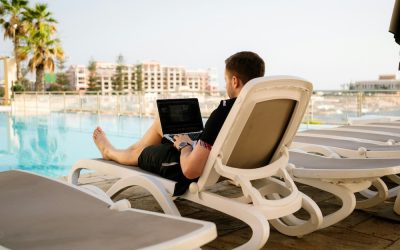What is the position on Capital Gains Tax and Rent a Room?
As a capital gains tax accountant we often get asked about how CGT applies to landlords letting a room in their house under the rent a room scheme. Capital Gains Tax and Rent A Room relief offer a unique tax-saving opportunity. Rent-a-room relief aims to encourage those with spare rooms in their homes to let them out to increase the supply of furnished rental accommodation. Under the scheme, a person can earn up to £7,500 each tax year tax-free from letting out furnished accommodation in their own home. The limit is halved where the income is shared by two or more people, each person being able to earn £3,750 tax-free a year.
But there may be another compelling reason why you might want to consider the rent a room scheme. If you let your property under an Assured Shorthold Tenancy, when it comes to selling it you will need to consider Capital Gains Tax. If you let out part of your house under the rent a room scheme there is no Capital Gains Tax implication.
For some of our clients, this has resulted in significant tax savings, not only in income tax but in terms of CGT too. In one instance, an investor had bought their student son a property in which the son lived in for 4 years during his student days with 3 of his friends under the rent a room scheme. Not only did he get his personal tax allowance plus the £7500 rent a room allowance, when he left university he was able to sell the property, which had risen significantly, and paid no CGT.
Automatic exemption
Where rental income is less than the rent-a-room limit of £7,500 (or £3,750 where income is shared), the tax exemption is automatic. There is no need to tell HMRC about the rental income or claim the relief.
Rental income of more than the tax-free limit
If the rental income that a taxpayer receives from letting a room in their house exceeds the rent-a-room limit of £7,500 (or £3,750 where income is shared), the taxpayer has the option of claiming rent-a-room relief or working out the associated rental profit in the usual way. Where rent-a-room relief is claimed, the taxpayer simply deducts the rent-a-room tax-free limit from their rental income to arrive at their taxable rental profit.
Where rental profit exceeds the tax-free rent-a-room limit, the taxpayer must complete a self-assessment tax return. If the relief is to be claimed, the claim can be made in the tax return. Whether a claim is worthwhile or not will depend on whether actual expenses are more than the rent-a-room tax-free limit.
Example
Pippa lives alone and lets out a furnished room in her home, receiving rental income of £10,000 for the tax year. Her associated expenses are £2,000. If she claims rent-a-room relief, she will pay tax on rental profits of £2,500 (£10,000 – £7,500). However, if she does not claim the relief, she will pay tax on the excess of her rental income over her actual expenses, a taxable rental profit of £8,000 (£10,000 – £2,000). Opting into the scheme is clearly beneficial as this reduces her taxable rental profits by £5,500. If Pippa is a higher rate taxpayer, this will save her tax of £2,200 (£5,500 @ 40%).
Matteus also lives alone renting out a furnished room in his home. His rental income is also £10,000, but his associated expenses are £9,000. In Matteus’s case, opting into the rent-a-room scheme is not beneficial as doing so will increase his taxable profit from £1,000 (£10,000 – £9,000) to £2,500 (£10,000 – £7,500).
Preserving losses
The rent-a-room scheme cannot be used to create a loss, and where actual expenses exceed rental income, it will generally be better not to opt into the scheme in order to preserve the loss so that it can be carried forward and set against future rental profits. However, if the likelihood of being able to use the loss is small, it may be preferable to take advantage of the rent-a-room exemption to save work.
Example
Martha lets a furnished room in her own home, receiving rental income of £3,000. The associated expenses are £4,000. If she chooses to use the rent-a-room scheme (which may be attractive due its simplicity) she does not need to report the income to HMRC. However, if she wishes to preserve the loss of £1,000 (£3,000 – £4,000), she will need to complete the property pages of the self-assessment tax return.
No one size fits all
The extent to which it is beneficial to claim rent-a-room relief will depend on personal circumstances. Speak to us to get an insight and set up your tax structure to meet your needs now and in the future.
Get in touch on 0800 907 8633, via tax@fixedfeetr.com or via our online contact form.
If you enjoyed this post on our views on rent a room, why not check out our post on how far back does the let property campaign go or our guide to residence nil rate band?


